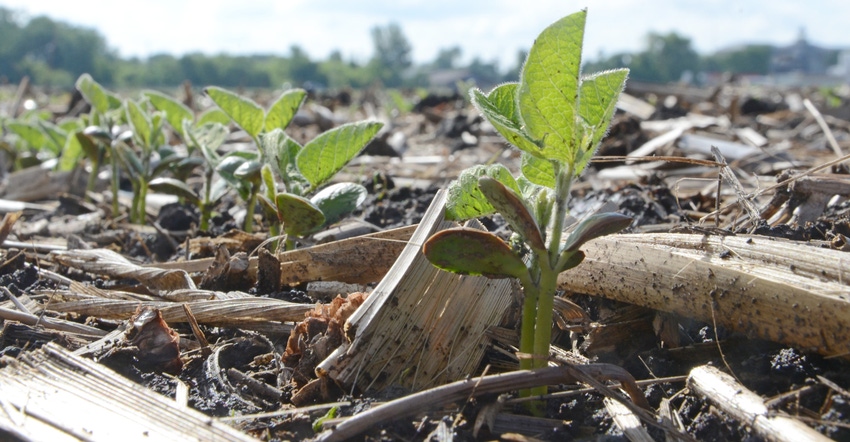April 15, 2020

While most of the talk these days is about COVID-19, farmers still need to look at their planting needs for the 2020 crop. That can also mean dealing with what appears to be the long shadow of the 2019 season — and the potential need for inoculating your soybean crop.
The addition of an inoculant to your crop may make more sense in 2020 because of flooding in 2019. Fred Below, University of Illinois plant physiologist, notes he’s tested a lot of inoculants and has found they work best in very low pH soils. “Those are soils that the bacteria hate,” Below says. “But flooding may have hurt microbial activity in general.”
Below notes he’s tested many inoculants and found it challenging to show a yield boost. But for 2020, if a farm has seen flooding in 2019, he notes, “It’s cheap insurance, and it’s probably wise to go for it. The soybean is a nitrogen-limiting crop; and if you get better nodulation using an inoculant, you can help the crop.”
He also notes there’s another issue that may impact availability of the Bradyrhizobia bacteria that soybeans rely on for symbiotic nitrogen fixation. “It’s the so-called fallow syndrome,” Below says. “We have those prevent-plant, no-crop acres, whether flooded or fallow. It’s not a terrible gamble to use an inoculant considering the relatively low cost.”
Another area he’s looking at is biofungicides, and how they work. “A seed treatment fungicide will stay with the seed and the seedling plant, but a biofungicide follows the root, which may provide better protection to the crop.”
Biofungicide fills a gap
Below is still looking at the biofungicide issue and its value to the plant. And there’s another consideration for biofungicide use with an inoculant — covering a gap.
Justin Clark, technical field manager, BASF, notes that those flooded soils not only may have a drop in their native inoculant bacteria load, but could also be more prone to fungal diseases like pythium. Having a biofungicide at work from planting with a seed treatment fungicide can extend protection from key seedling diseases like fusarium, Rhizoctonia and pythium.
“The Integral biofungicide component of Vault HP Plus Integral Inoculant complements a grower’s base fungicide seed treatment by growing around the root system of the plant. If you use a biological fungicide on top of your base active ingredient, over a few weeks of plant growth the biological is there to grow around the root system.”
BASF is one company that markets an inoculant teamed with a biofungicide — Vault HP Plus Integral — designed to take on soilborne diseases. “You get the fresh, effective rhizobial inoculant insurance and the added biofungicide component with Integral,” Clark says.
He talks through the process, noting that a fungicide seed treatment with a traditional chemical product provides protection for a certain time, but the biofungicide will grow around the expanding root system and live on the outside of the root. “It’s preventing the intrusion and invasion of pathogens. You can get added protection on top of what a traditional seed treatment active ingredient will provide,” he says.
For growers firing up planters and looking at their soybean fields for 2020, considering how 2019 impacted cropland may drive the decision to include an inoculant.
Adds Below: “We’re ready to get the planter out here. You don’t want to risk anything.”
About the Author(s)
You May Also Like






